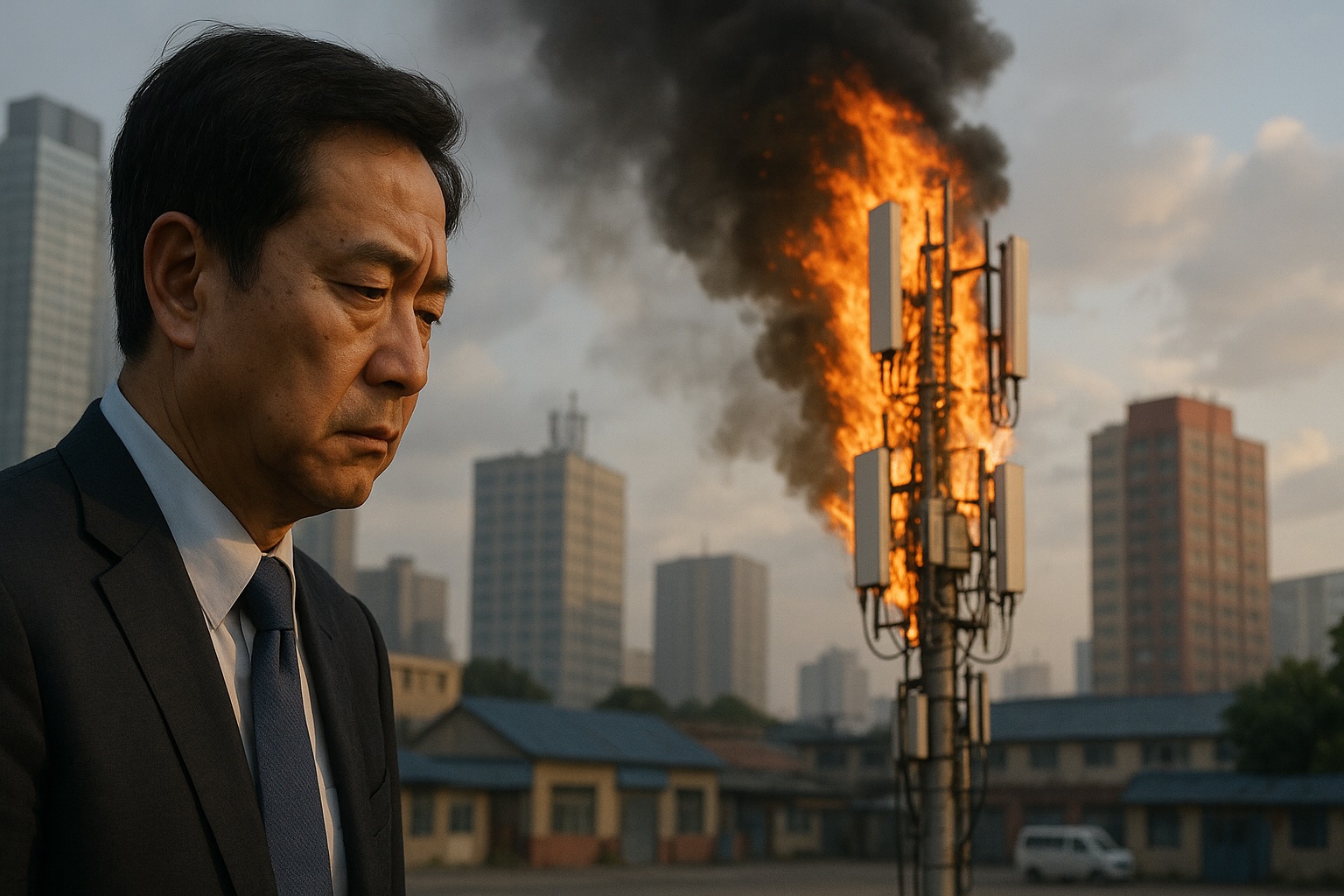China’s 5G Mirage: Trillions Burned, Momentum Broken

When the Chinese Communist Party (CCP) unveiled its 5G ambitions in 2019, the initiative was heralded as a monumental leap forward, a bid to capture the crown of global telecommunications leadership and redefine digital infrastructure for decades to come. It was presented not merely as a technological upgrade but as a strategic move toward commanding heights of future industry, national security, and digital influence. Four years later, however, the illusion is fracturing. Over 1.8 trillion yuan has been poured into building what is technically the world’s largest standalone 5G network, consisting of more than 4.4 million base stations, roughly 60% of the global total. Despite this unparalleled scale, the system is neither economically viable nor strategically sustainable.
The strategy behind China’s 5G rollout was brute-force expansion. State-owned telecom giantsChina Mobile, China Telecom, and China Unicomwere marshalled into deploying tens of thousands of towers at breakneck speed. Industrial zones, ports, power plants, farmland, and even remote villages were wired up with millimetre-wave technology designed to enable faster downloads and low-latency communications. Yet the return on investment has been dismal. The infrastructure is expensive to maintain, and customer uptake has been tepid.
Consumer reports reflect a fundamental flaw in policy assumptions. Most users experience little discernible benefit from 5G compared to existing 4G services. High-definition video, browsing, and social mediaall core digital activitiesfunction efficiently on 4G networks at a fraction of the cost. A former telecom executive acknowledged that 5G has failed to stimulate significant revenue growth. Worse still, the system consumes a staggering amount of power, costing China an estimated 1 billion yuan in electricity each day just to keep the 5G network running.
Instead of empowering innovation, the deployment risks draining national resources. A hyper-centralized rollout, orchestrated from Beijing, has treated infrastructure as a symbol of might rather than a tool for utility. 5G has not been embraced by usersit has been imposed upon them, with little regard for their actual needs.
Facing mounting inefficiencies, China is now executing a sharp strategic pivot: away from terrestrial 5G networks and toward Low Earth orbit (LEO) satellite internet. In April, Beijing successfully launched four test satellites from the Jiuquan spaceport, signalling what many analysts view as a de facto retreat from its previous telecom doctrine. The stated goal is to construct a wide-reaching satellite backbone that circumvents ground-level limitations.
The contradictions are glaring. CCP officials previously pledged near-universal 5G coverage, with rural deployment targets reaching 95% by 2025. Yet the leading architect of China’s satellite program, Yuan Jun Gang, admitted during a public lecture that the existing 5G ecosystem suffers from serious structural faults: geographically constrained base stations, weak support for low-altitude UAVs, high energy consumption, and limited emergency resilience. These issues are not just technicalthey are strategic liabilities.
The pivot to satellite connectivity amounts to an implicit admission that the 5G model, as pursued under Xi Jinping’s centralist doctrine, is faltering. According to experts at Taiwan’s Institute for National Defence and Security Research, this shift represents a contradiction so stark that it is akin to the CCP undermining its own flagship initiative.
No discussion of China’s 5G downturn is complete without examining the semiconductor bottleneck. One of the primary reasons the country’s telecom ambitions are collapsing is because the technology itself relies on foreign chipsespecially advanced 7nm processors made by Taiwan’s TSMC. These components powered Huawei’s early 5G base stations and smartphones, but were swiftly cut off through U.S.-led export controls.
China has attempted to domestically manufacture comparable chips, the results have been underwhelming. Performance is unreliable and yield rates remain low, forcing Huaweia top patent holder in global 5G technologiesto release 4G smartphones during the very era its country was trying to dominate 5G. This paradox is not just technological; it is symbolic of deeper systemic dysfunction.
A strategic analyst in Taiwan, summed it up concisely: whether China pursues terrestrial 5G or satellite internet, the ability to access advanced semiconductors is the non-negotiable baseline. Without them, both networks are fundamentally crippled.
Even in the satellite domain, China finds itself on the back foot. The country has pledged to deploy 12,000 LEO satellites, aiming to blanket the Indo-Pacific with connectivity and expand digital influence across critical geostrategic theatres. However, when stacked against Western effortsmost notably Starlink’s projected fleet of over 45,000 satellites by 2027, China's plan appears more aspirational than achievable.
These Western systems already boast compatibility with 4G smartphones, decentralized innovation ecosystems, and private capital investment advantages that China’s state-centric model cannot easily replicate. The CCP’s attempts to chase Elon Musk’s model lack the bottom-up dynamism that democratic innovation systems cultivate. Institutional rigidity, policy inconsistency, and capital constraints will likely hamper Beijing’s ability to catch up.
The grand narrative of China’s 5G policy has unravelled into a cautionary tale. Trillions have been spent, yet there is little tangible progress. The underlying flaws,excessive centralization, poor cost-efficiency, chip dependency, and strategic incoherencereveal a techno-political system more focused on projection than practicality.
China’s current pivot toward satellite internet is emblematic of a reactive regime scrambling for relevance after losing pace with the West. It is not a confident stride forward; it is a backtrack in disguise.
Without access to cutting-edge semiconductors, coherent infrastructure planning, and a credible innovation pipeline, China’s dream of telecom supremacy is stalling. The lesson is clear: state-driven ambition can build towers, but only strategic clarity and systemic reform can make them work.
Sharp Power



![From Kathmandu to the World: How Excel Students Are Winning Big [Admission Open]](https://nepalaaja.com/img/70194/medium/excel-college-info-eng-nep-2342.jpg)
